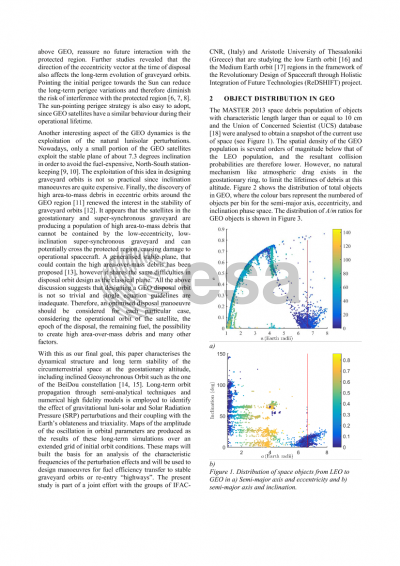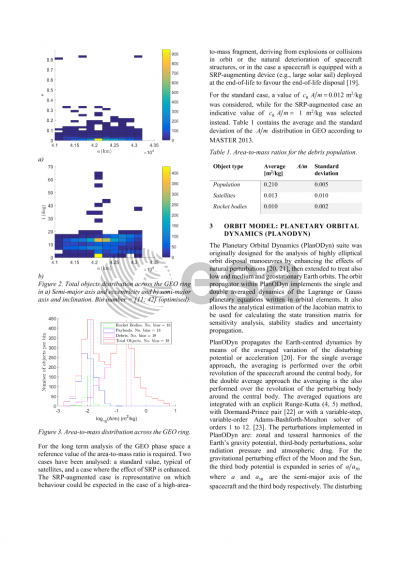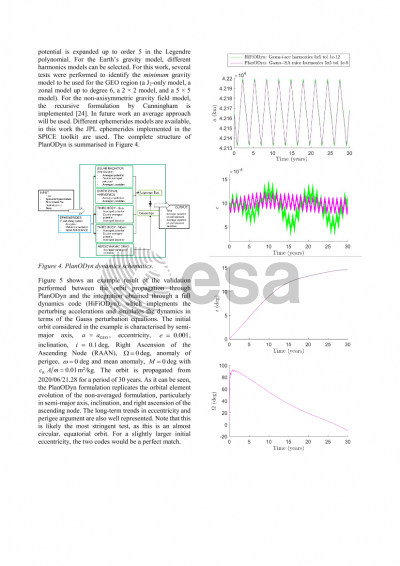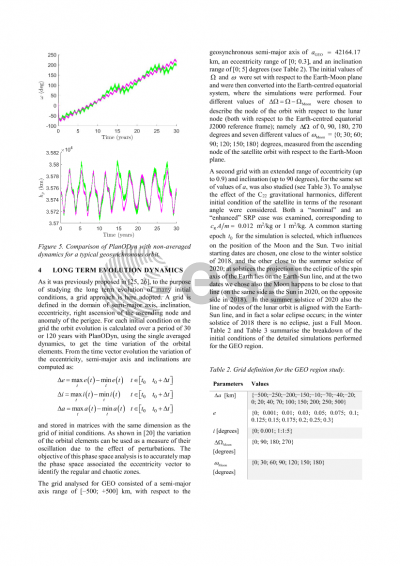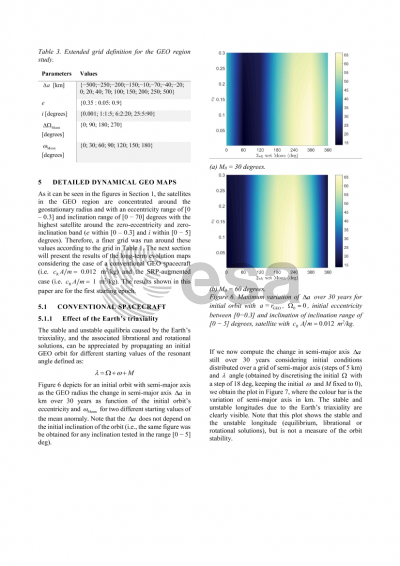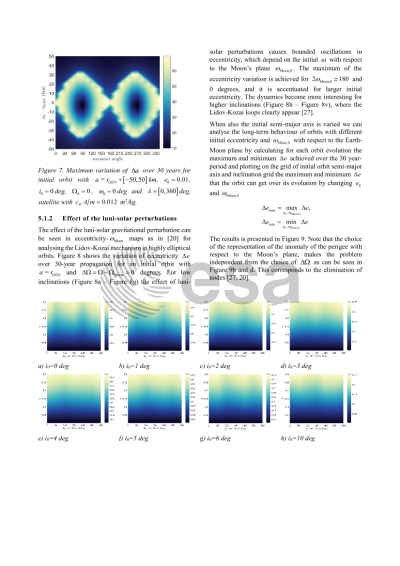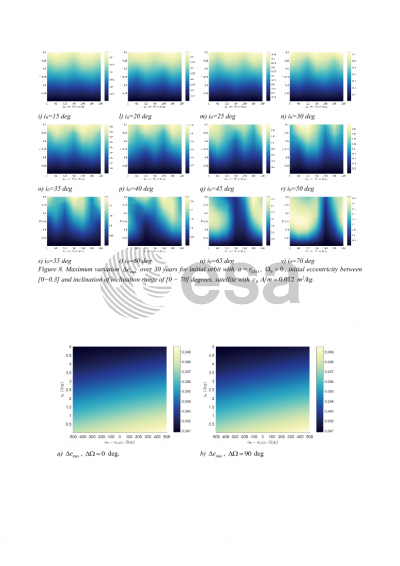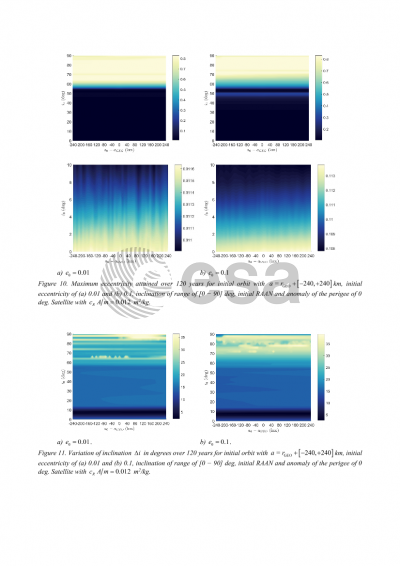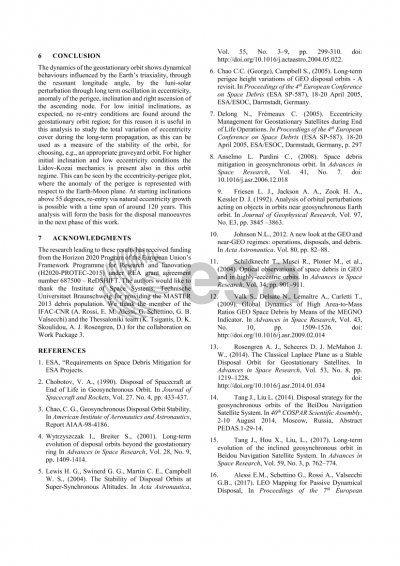Document details

Abstract
Spacecraft in Geostationary orbit represent a fundamental aspects of space activities and services to the Earth. According to the publicly-available two-line element set, around 1200 total objects are catalogued at a semi major axis around the geostationary value and eccentricity less than 0.2, including active spacecraft, rocket bodies and space debris. Apart of selecting safe procedures for operational spacecraft such as orbits with fewer debris, specific altitude configurations, or implementing active avoidance manoeuvres to avoid collision, space debris guidelines aim at limiting the creation of new debris (by prevention of in-orbit explosions) and implementing end-of life disposal manoeuvres to free the GEO protected regions. ESA requirements on Space Debris Mitigation for ESA Projects suggest that space systems operating in the GEO protected zone shall be disposed into a graveyard orbit with the eccentricity less than 0.005, and a given minimum perigee altitude above the geostationary altitude.
This paper characterises the dynamical structure and long term stability of the circumterrestrial space at the geostationary altitude, including inclined Geosynchronous Orbit such as the one of the Beidou constellation. Long-term propagation through semi-analytical techniques and numerical high fidelity models will be employed. Frequency analysis will be used to highlight the characteristic frequencies of luni-solar and solar radiation pressure perturbation and their coupling with the Earth’s oblateness and triaxiality. Stability maps will be show in the space of semi-major axis, latitude and inclination. These maps will be used to design manoeuvres for fuel efficiency transfer to stable graveyard orbits.
Preview

